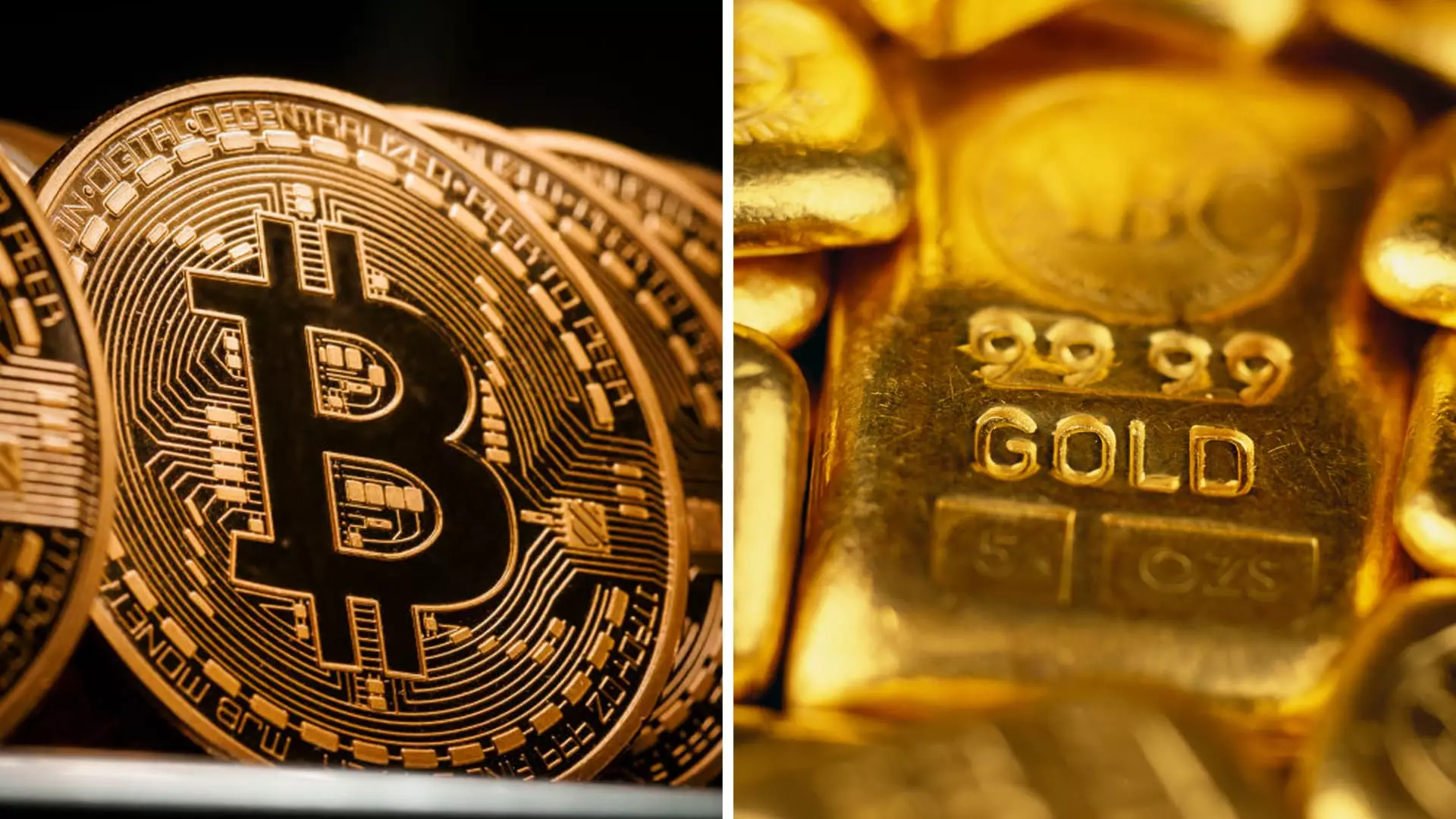As the cryptocurrency market experiences a surge, many investors are flocking to bitcoin, captivated by its seemingly alluring high returns. However, as George Milling-Stanley, the chief gold strategist at State Street Global Advisors, emphasizes, this rally may foster a misguided sense of security. Unlike traditional assets like gold, which have a long-standing history of stability and value, bitcoin’s nature as a “return play” raises questions about its fundamental worth as an investment.
Milling-Stanley’s perspective is particularly significant against the backdrop of his firm’s SPDR Gold Shares ETF (GLD) celebrating its 20th anniversary. Historically, gold has been considered a safe haven, especially in times of economic uncertainty, and has consistently shown resilience as a tangible asset. As the world’s largest physically backed gold ETF, GLD has solidified this perception by demonstrating a remarkable growth of over 30% in 2024 alone.
Reflecting on the past, Milling-Stanley notes that gold’s price trajectory has been impressive, increasing from $450 an ounce two decades ago to current prices that position it five times higher. He surmises that if this trend continues, which has seen gold reaching its highest values since late 2023, the forecast could potentially see gold prices exceeding $100,000 in the next twenty years. This historical performance serves as a stark contrast to the volatility seen in cryptocurrencies, where price fluctuations are often drastic and unpredictable.
Moreover, gold has recently reemerged as an attractive investment, recording its best weekly performance since March 2023. Against the backdrop of geopolitical tensions and economic uncertainties, investors are reminded of the intrinsic value that only a physical asset like gold can provide. With gold prices nearing their all-time high, the metal’s return to favor underscores the importance of stability that cannot be matched by digital currencies.
Milling-Stanley’s critique extends into the very language used within the cryptocurrency community. He argues that the term “mining” is misleading, as it implies a process akin to extracting precious metals. Instead, he posits that bitcoin generation is merely a computational operation, devoid of the physicality and historical significance that mining gold entails. This comparison is crucial as it illustrates an attempt by promoters to grant cryptocurrencies an aura of legitimacy that they do not inherently possess.
There is an ever-growing concern that this attempt to equate bitcoin with gold could manipulate investors who traditionally favor the safety of physical assets. As the debate between cryptocurrency and traditional investments intensifies, it is essential for investors to consider the long-term implications of their choices. While bitcoin may present opportunities for quick gains, the questions surrounding its stability and true value are more pronounced than ever.
Ultimately, Milling-Stanley underscores the unpredictability of both gold and bitcoin in the coming years. Although he expresses excitement about the future trajectory of gold, he admits that the journey will be complex and fraught with uncertainty. Investors should remain vigilant, understanding that while the allure of returns from cryptocurrencies is tempting, it is prudent to recognize the enduring value of gold as a safer investment. In a rapidly changing financial landscape, the wisdom of investing in something with historical stability may prove to be a more sensible strategy.

